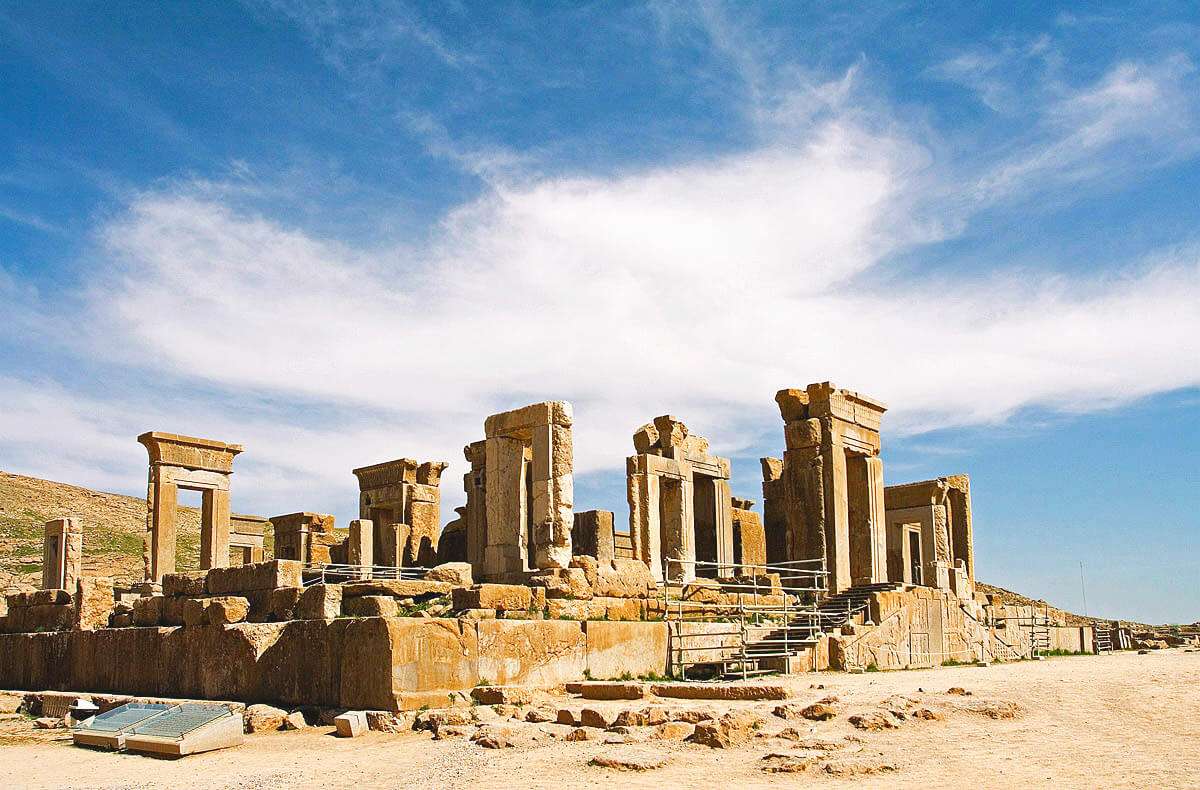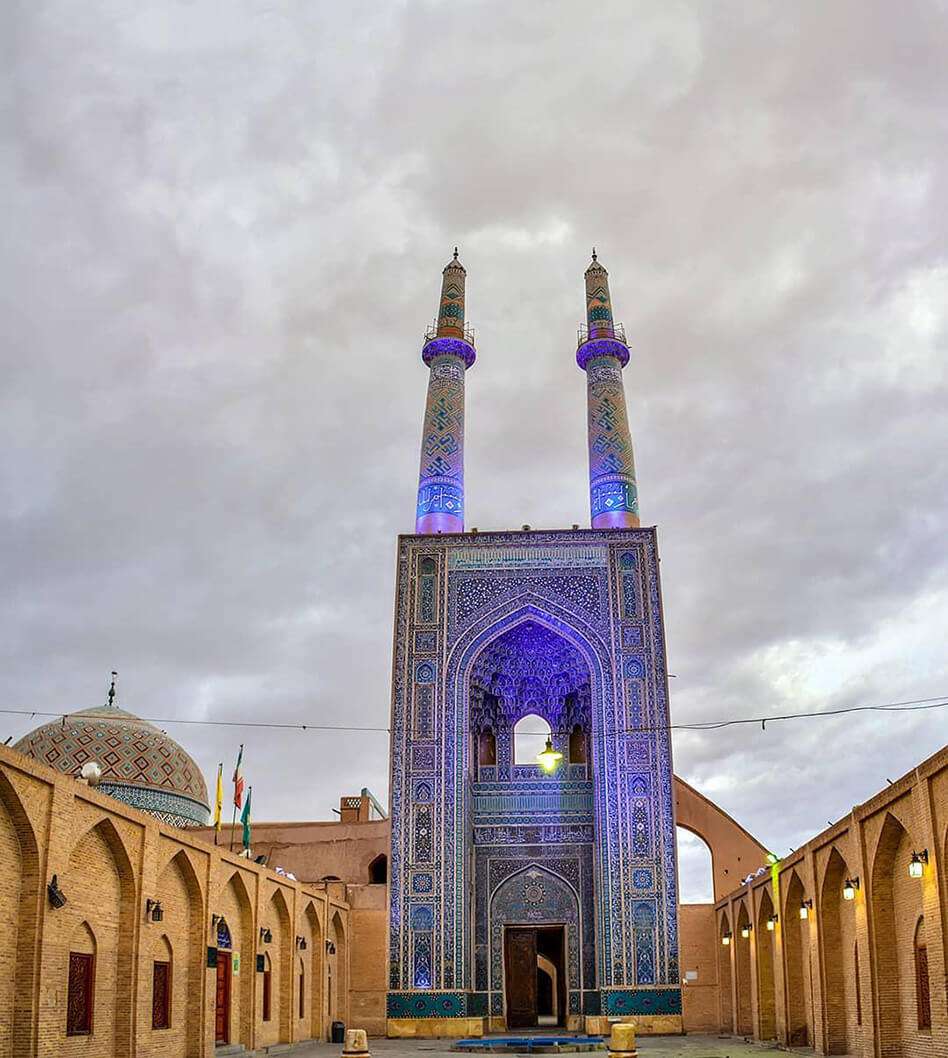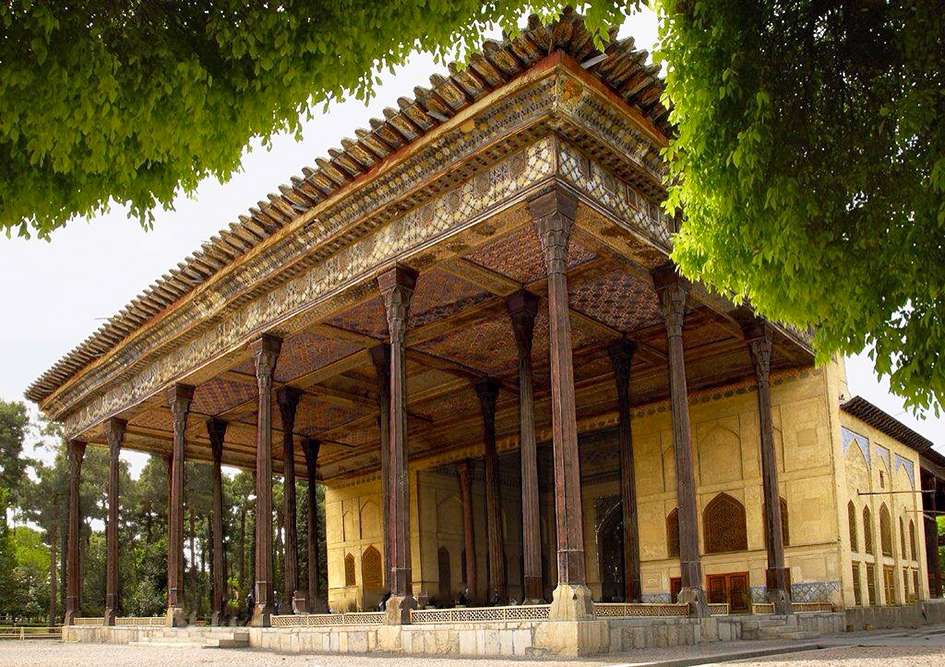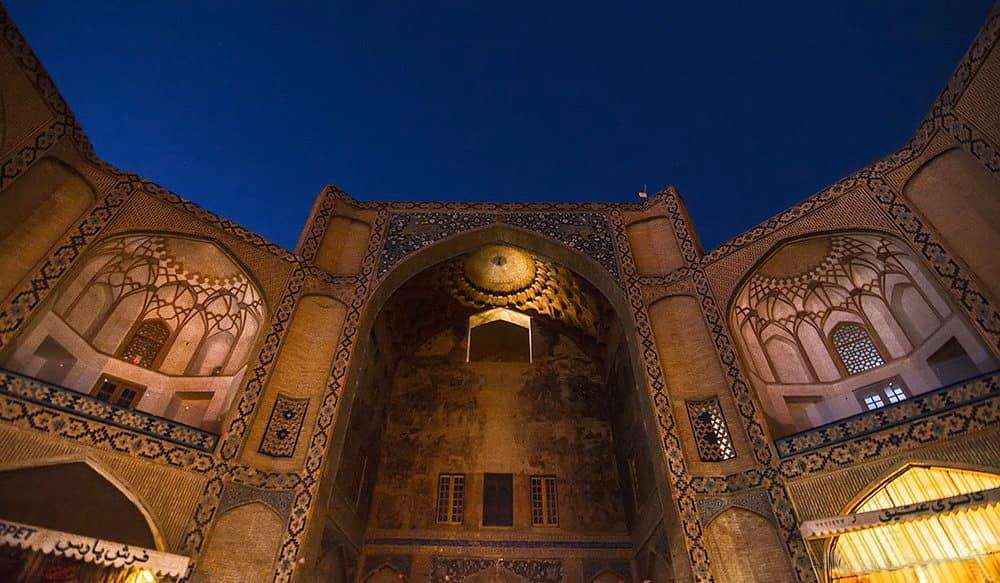Tourist Attractions In Iran
- Route NameTop Places You Must Visit in Shiraz
- ThemeArchitecture/Religious and Epic/Eastern Bazaar
- Duration4 hr(s) and 45 min(s)
Take Glimpses of the History along the Pass Ways of Shiraz
Each monument in Iran reminds of a historical figure or certain historical events. While in Shiraz, one of the top places to visit is Nasir-al-Molk Mosque, built with the command of Mirza Hasan Ali Nasir al-Molk, in the 19th century. Try to go there in the morning so as not to miss the exquisite natural play of lights through the colorful glass. Then stop at Shah-e Cheragh Shrine where Sultan Mir Ahmad, one of the brothers of Imam Reza was buried in the 9th century. Being the chief religious site in Shiraz, Shah-e Cheragh Shrine boasts of remarkable architecture.
Our next stops on this route are the structures built in the 18th century by Karim Khan Zand, the then regent of Iran. The Vakil Bazaar was built in a cross shape plan and contained shops and caravansaries which stand to this date. After Bazaar it is a good idea to visit the 18th century Vakil Bathhouse and the Vakil Mosque. The bathhouse occupies an area of 1,350 square meters and its chambers were designed in a way to prevent the heat from escaping the chambers and cold air from getting in. The Vakil Mosque maintains the basic features of Zand architecture, though it has endured many phases of destruction and reconstruction. The journey through the monuments built by Karim Khan Zand can be completed by a visit to the Citadel. It consists of 12,800 square meter area with four circular towers at each corner. The Citadel was constructed as a fortified residential and administrative area in the center of the city.
- Nasir Al-Mulk Mosque (Pink Mosque)
- Shahcheragh Shrine
- Vakil Bazaar
- Vakil Mosque
- Vakil Bath
- Arg of Karim Khan (Karim Khan Citadel)
- Route NameBest Places on a Day Trip Out of Shiraz
- ThemeArchitecture/Museum/UNESCO Heritage
- Duration5 hr(s)
Over the Footsteps of the Achaemenid Empires
Iran or Persia? Finding the answer will take you on a journey to the deepest pages of the history of this country, which are best manifested by the ruins of the places and cities found out of Shiraz. 50 kilometers from Shiraz, in Marvdasht, you can have a glimpse at true ancient glory and majesty in the ruins of Persepolis. It was specifically constructed to official house meetings and the national religious traditions of Nowruz. Persepolis, the magnificent showcase of Achaemenids, was founded in 518 BC by Darius the Great. Next on this route is the ancient capital city called Pasargadae. Pasargadae was built in 546 BC, on the land that is considered as the homeland of Cyrus the Great and his ancestors. This is a UNESCO World Heritage site filled with the ruins of architecturally notable structures and is famous for housing the Mausoleum of Cyrus. Approaching Pasargadae, the first building that comes to sight is the solemnly standing mausoleum, composed of a high plinth and a tomb-chamber, all in blocks of white calcareous stone.
- Persepolis
- Naqsh-e Rustam
- Pasargadae
- Route NameBest Places to Visit in Yazd on a Day Trip
- ThemeArchitecture/Museum/UNESCO Heritage/Religious and Epic
- Duration3 hr(s) and 30 min(s)
The Ultimate Route Through Places, History, Culture, Religion, Lifestyle
In Yazd, you learn and visit a lot about the influence of religious beliefs, historical events and harsh circumstances of the desert on the lifestyle of the people, and their interplay. Start your trip to visit places at the Amir Chakhmaq Square where you can see a complex of historical buildings dating back to the 15th and 16th centuries. Then follow to the Water Museum where you can see the methods by which human residence in this arid city has persisted through centuries. Next on our route is the Jame Mosque which, seen from a distance, resembles a huge porch rising in the middle of the desert. After the mosque, go to the Fahadan neighborhood where the magnificent Lariha House (Lari's Mansion), dating back to more than a century ago, and Ziaiyeh School, also known as Alexander’s Prison, will prompt a journey in time.
- Amir Chakhmaq Complex
- Yazd Water Museum
- Jame Mosque of Yazd
- Alexander Prison Yazd (Ziyaiyeh school)
- Lariha House
- Route NameMost Visited Museums as a Historical Story in Tehran
- ThemeArchitecture/Museum/UNESCO Heritage
- Duration9 hr(s)
Iran as a Story Told by Tehran's Museums
Put in the appropriate context, artifacts tell the story of those who made them; about their beliefs, traditions, rites, different industries, diet, clothing and whatever else associated with the life of their creators. In this regard, museums, as collections of human-made artifacts, are bibles of unheard stories from times long past to very recent days. In this route, you are going to visit five major museums of Tehran, each with a different kind of story to tell you about Iran and its people.
- Toopkhaneh Square
- Malek National Library and Museum
- National Museum of Iran
- Abgineh Museum of Tehran
- National Jewelry Museum
- Sepah Bank Museum
- Route NameA Day Trip from the Northern Royal Palaces of Tehran to the Bazaar of Tajrish
- ThemeArchitecture/Museum/Eastern Bazaar
- Duration10 hr(s)
History Bound and Unbound;
A Day Trip from the Northern Royal Palaces of Tehran to the Bazaar of Tajrish
You are invited to a pleasant escape from the polluted air and the dizzying traffic which is probably tied with your image of Tehran. You are going to visit a heavenly countenance of this city; clean and clear, replete with serenity. First, explore the magnificent complexes on the southern foothills of Alborz, which were once summer retreats for the Qajarid monarchs, later expanded to Pahlavi royal residences, and finally turned into museums. Then, descend from the heights of royal opulence and delve into the bustle of the old bazaar. While the museum complexes of Saad-Abad and Niavaran strive to preserve the royal past in isolation, here in the bazaar, the historical past can’t help being integrated into the daily life presently in flow; a life which is going to join history in turn.
- Saadabad Palace
- Tajrish Bazaar
- Niavaran Palace Complex
- Route NameTop 6 Places in Isfahan as an Open-air Museum of the Safavid Era
- ThemeArchitecture/UNESCO Heritage
- Duration6 hr(s)
Top 6 Places in Isfahan as an Open-air Museum of the Safavid Era
The prosperity of Isfahan in the 17th century is reflected in the prominent monuments and icons standing at each and every corner of the city. The jewel on the crown of the developments in the Safavid era is the royal square of Naqsh-e Jahan surrounded by four glorious landmarks. Moreover, The royal palace of Chehelsotun, the vibrant boulevard of Chahar-Bagh shaded by old lofty trees, and the Si-O-Se-Pol Bridge (33 bridge) with its unmatched arches on Zayanderoud river provide glimpses to the Safavid grandeur.
- Naqsh-e Jahan Square
- Ali-Qapu Palace
- Sheikh Lotfollah Mosque (Lotfollah Mosque)
- Chehel-Sotoun Palace
- Chahar Bagh Boulevard
- Si-o-Se Pol Bridge
- Route NameThe Best Everlasting Passages of Isfahan Bridges
- ThemeArt and Music/Architecture/Relax and Romance
- Duration3 hr(s)
The Best Everlasting Passages of Isfahan Bridges
Bridges have been constructed across the river in Isfahan since Sasanian era 224-651. By the time Isfahan had been designated as the capital of Safavid dynasty, building bridges became a part of the urban expansion. Built in a harmony with other imperial buildings, Safavid bridges were multifunctional. They were masterfully built not only for crossing the river but for controlling the water flow of the river to irrigate the nearby gardens and also for recreational purposes. All in all, there are thirteen bridges built on Zayanderud. However, we want to introduce the most important and accessible ones you can visit in Isfahan. So, we will go over the bridges one by one from the west to the east.
- Marnan Bridge
- Si-o-Se Pol Bridge
- Choobi Bridge (Joui Bridge)
- Khaju Bridge
- Route NameA Day Tour in Top Tourist Attractions of Isfahan
- ThemeArchitecture/UNESCO Heritage/Religious and Epic/Eastern Bazaar/Handicraft
- Duration10 hr(s) and 30 min(s)
A Day Tour in Top Tourist Attractions of Isfahan In the Safavid Era
The prosperity of Isfahan in the 17th century, the largest and most populated city of the Safavid era, is reflected in the prominent monuments and icons standing at each and every corner of the city. Founded by Shah Ismail I in the early 16th century, Safavid dynasty opened a new chapter in the history of Iran. By establishing the Twelver Shi’ism as the official religion of the state, the Safavids managed to unify a considerable number of ethnic groups and take control of the country. Originally centered in Ardabil, Safavids declared different cities as their capital during their relatively long rule (1501-1736). In chronological order, the capitals were Tabriz (1501), Qazvin (1548) and finally Isfahan (1598).
Actually, Shah Abbas the Great ordered the transference of the capital to Isfahan because the city was geographically, climatically, politically and strategically more suited to the aims of his kingdom. However, before the actual transference, a construction campaign was announced in Isfahan and many new monuments and sites were added to the city between the years 1590-1598. Some of these new additions are: Maydan-e Naqsh-e Jahan, Chahar Baq, Sheikh lotf Allah Mosque, Abbasi Congregational Mosque, Ali Qapu Palace, Qeisarieh Bazaar, Si-O-Se Pol and many others.
Art and Architecture
The blending of Persian and Islamic arts is represented in Safavid art. The enthusiasm of Safavid kings for art, especially Shah Abbas, promoted the Persian-Islamic art beyond the state boundaries, especially to Ottoman and India. Accordingly, carpet weaving, calligraphy, tile working, painting, and architecture came to perfection during the Safavid era. However, among these very different types of art, architecture and painting gained the upper-hand as the most important achievements of the Safavids. Many relics from that period confirm the importance of art in the Safavid dynasty. Naqsh-E-Jahan Square, the vibrant boulevard of Chahar-Bagh shaded by old soaring trees, the royal palace of Chehelsotun, Charbagh-Madrasah and its adjacent Honar bazaar, the luxurious Abbasi Hotel, unparalleled bridges of Khaju and Si-o-se-pol on Zayandeh Roud, and Jolfa quarter (the Armenian neighborhood) and its remarkable Vank Cathedral, are just some examples of Safavid architectural heritages in Isfahan displaying this intricate art.
Also, under the patronage of Shah Abbas I, Isfahan housed the last school of miniature in the 17th century. Furthermore, the striking tile and ceramic art of the Safavid period, characterized by Persian and Islamic motifs and patterns which were mostly printed on turquoise blue backgrounds, is reflected in many exquisite architectural decorations. A number of these pieces have remained in Isfahan and some of them are being kept in famous museums of the world. Some examples of the last case are the tiled panel with floral patterns in Philadelphia museum of Art and the painted tile panels in Metropolitan Museum.
Well-known Artists and Figures
Many famous artists and scholars in the Safavid era appeared to participate in the development of art and architecture of Isfahan. Doost Mohammed (painter and calligrapher), Sadeqi Beg (a well-known painter and creator of the “canon of Painting”), Ali Reza Abbasi and Mir Emad (calligraphers), and great philosophers like Sheykh Bahaie, Mir Damad, and Mulla Sadra are among the outstanding figures of that time.
Foreign Travelers to Isfahan
The reputation of Isfahan as a charming city during the Safavid reign attracted many travelers to this city. These travelers were of different walks of life, from traders and politicians to orientalists and missionaries. Chardin, a French jewel merchant who traveled to Isfahan in the 17th century, and wrote in detail about it, emphasized on the splendor and extent of the city which could rival London. Tenreiro, a Portuguese traveler, visited Isfahan in the 16th century, Thomas Herbert, a 17th-century English merchant, explored Isfahan and Kashan, and Adam Olearius, a German scholar, visited Isfahan in 1637 to explore the trade route with Iran. Olearius described the city as “the Metropolis of the whole kingdom of Persia”.
- Naqsh-e Jahan Square
- Jame Abbasi Mosque (Shah Mosque)
- Sheikh Lotfollah Mosque (Lotfollah Mosque)
- Ali-Qapu Palace
- Qeysarie Gate (Portal)
- Grand Bazaar of Isfahan (Qeysarieh Bazaar)
- Chehel-Sotoun Palace
- Chahar Bagh Boulevard
- Vank Cathedral
- Route NameAn Impressive Tour of Persian Poets in the City of Love & Poetry
- ThemeArchitecture/Relax and Romance
- Duration2 hr(s) and 45 min(s)
A Celebration of Persian Poetry in the Company of Orange Blossoms
Shiraz is the incarnation of poetry and faith in the lush company of flowers and trees. Classic Persian poetry is synonymous with the poetry of Saadi and Hafez. Visit Saadieh, where you will find the tomb of the 12th-century poet in a structure of white marble stone with a turquoise dome, standing in the middle of a beautiful garden. There you can also find the tomb of Shurideh Shirazi, another poet from Shiraz.
More to the north of Shiraz, is the mausoleum of the world-famous 14th-century poet, Hafez. He is the most popular Persian poet who enormously influenced the Persian lyrics. The original structure was built in the 19th century by Karim Khan Zand, and renovated from 1935 to 1937 with the design of French architect, Andre Godard.
In the Allah o Akbar Gorge, you can experience an Iranian tradition of bestowing a blessing upon travelers by passing through the 10th century Quran gate. Overlooking the gate, you will find the Khaju Kermani park, where the Tomb of Khaju Kermani, the 14th-century poet, is located.
- Tomb of Saadi
- Tomb of Hafez (Hafezieh)
- Quran Gate of Shiraz
- Khwaju Kermani Tomb
- Route NameA Romantic Tour in the City of Orange Blossoms (Shiraz)
- ThemeArchitecture
- Duration4 hr(s)
Feel the Orange-Scented Spring Breeze in the Gardens of Shiraz
Thinking of Shiraz, one cannot help picturing beautiful flowers, exquisite gardens, and stately mansions. Start your aesthetic journey in history and culture by stepping into Narenjestan Garden, literally meaning a garden of orange trees. A house-garden from the Qajar period awaits you here. It consists of four buildings serving for residence, undertaking religious rites as well as private and public baths. Follow through this lofty journey in the Eram Garden which was built in the 13th century and has undergone many phases of renovation so as to stand in its dreamy state in the middle of a 12-hectare botanical garden, housing peculiar flowers, and trees. Keep on the route of the rich gardens and eloquent houses by visiting the Afif Abad Garden. Afif Abad or Golshan Garden dates back to the Safavid era but owes its eloquence to the Qajar period. You will be marveled by the combination of Achaemenid, Sassanid and Qajarid architectural characteristics touched by European styles. All of these historical mansions house unique museums.
- Narenjestan Qavam House
- Eram Garden
- Afif-Abad Garden
.jpeg)









